Dunedin is a student city
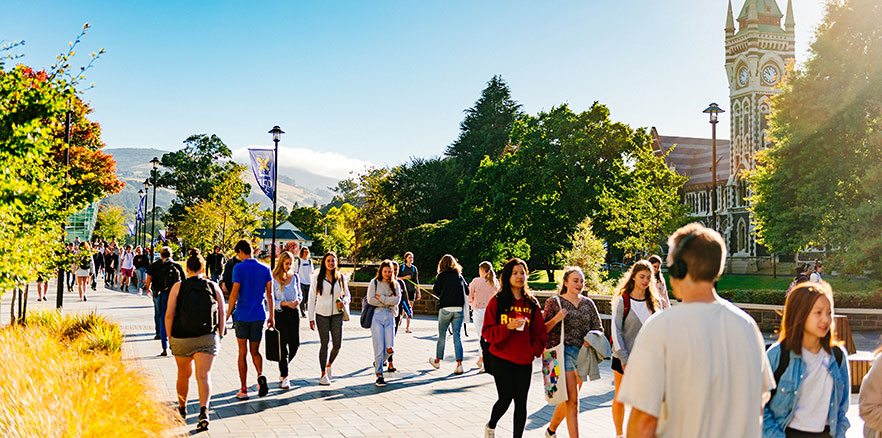
A true student city, Dunedin's population of 130,000 includes over 25,000 students. The university and polytechnic are next to each other, and just a short walk from the city centre.
This means students are critically important to Dunedin's cafés, bars, clubs, and shops – which focus on the student community.
Student discounts are available throughout the city, and you can walk just about everywhere you need to go.
Enjoy a 2‑minute commute
Most of our 3,500 first‑year students live at one of 14 residential colleges, located on or near campus. From some colleges, it's literally a 2‑minute walk to lectures, and a 5‑to‑10‑minute walk to the city centre.
In second year, most students go flatting in Dunedin's iconic student quarter. This is the only authentic student quarter in New Zealand. The most well-known streets are right next to campus. But there are thousands of flats where you can choose a quieter lifestyle that's still within walking distance.
There are also opportunities to flat in the historic Warehouse Precinct (around 2 km from campus), closer to the beach (6 km away), or in the hill suburbs.
Buses cover most routes every 15–30 minutes during peak times, and typically run until 10pm or 11pm.
Dunedin buses use the Bee Card tag‑on / tag‑off system. This is the same system used in Hamilton, Invercargill, Palmerston North, Queenstown, Rotorua, Tauranga, and Whangarei. It's similar to the AT HOP card in Auckland, Metrocard in Christchurch, and Snapper in Wellington.
An active environment
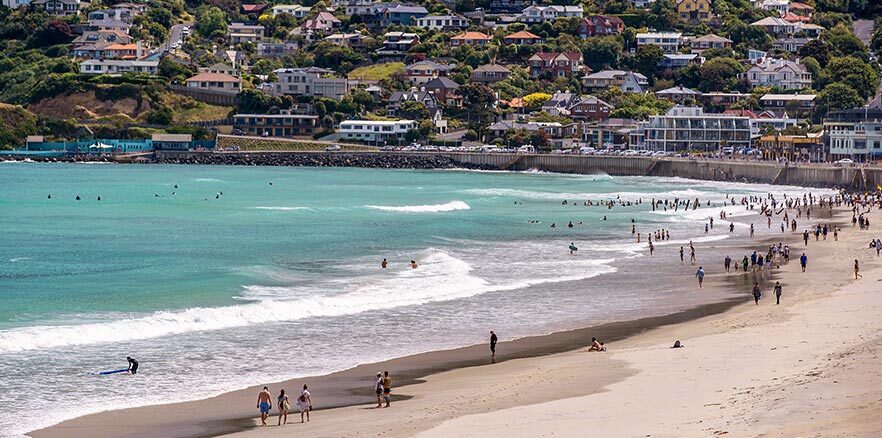
Dunedin has more than 25 beaches – including the famous St Clair surf beach on the city's southern edge.
From campus, you can get to St Clair in 15 minutes by car, 20 minutes by bike, or 30 minutes by bus.
Our beaches are beautiful and biodiverse: you might see penguins, seals, or sea lions. And then there's Tunnel Beach, which you access through a 150‑year-old tunnel hand-carved in sandstone cliffs.
Closer to campus, the Otago University Rowing Club, the University Oval Cricket Ground, Forsyth Barr Stadium, and Logan Park (athletics, hockey, rugby, soccer, and tennis) are a short walk away. Logan Park is directly across the road from the University of Otago College of Education, and the excellent Unipol gym (for university and polytech students) is next to Forsyth Barr Stadium.
Dunedin has hundreds of walking, cycling, mountain biking, and tramping options, and Queenstown and Wanaka ski fields are a few hours' drive away.
Moana Pool, an Olympic‑class indoor pool, is a 15‑minute walk from campus. There's also a heated salt-water pool at St Clair.
Cultural celebration
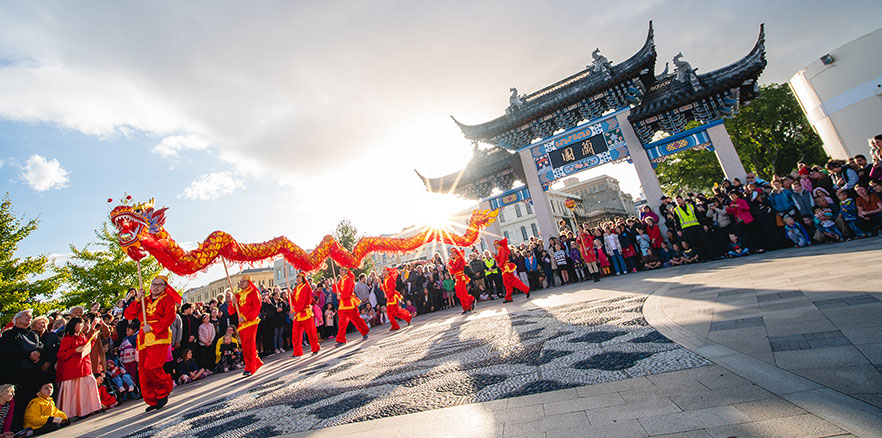
Ōtepoti / Dunedin has long been a centre of Māori, Chinese, and Scottish cultures. We celebrate these connections with three major new year events: Matariki, Chinese New Year, and 1 January.
Every three years, Te Rūnanga o Ōtākou hosts the Ngāi Tahu Treaty Festival at Ōtākou Marae – where Te Tiriti o Waitangi / the Treaty of Waitangi was signed in 1840.
There are three marae within Dunedin's city boundary: Arai te Uru in Wakari, Ōtākou Marae on Otago Peninsula, and Puketeraki Marae at Karitāne.
The university campus and student quarter are notably multicultural. The University of Otago has 3,000 international students from 100 countries, and more than half our academic staff moved here from overseas.
More recently, Dunedin has become one of six refugee resettlement locations in New Zealand – further increasing our cultural diversity.
Dunedin is home to numerous churches, Al Huda mosque (a 5‑minute walk from campus), and the Dhargyey Buddhist Centre (a 15‑minute walk). Census data also record Hindu, Spiritualism and New Age, and Jewish affiliations amongst the Dunedin population.
Artistic quality
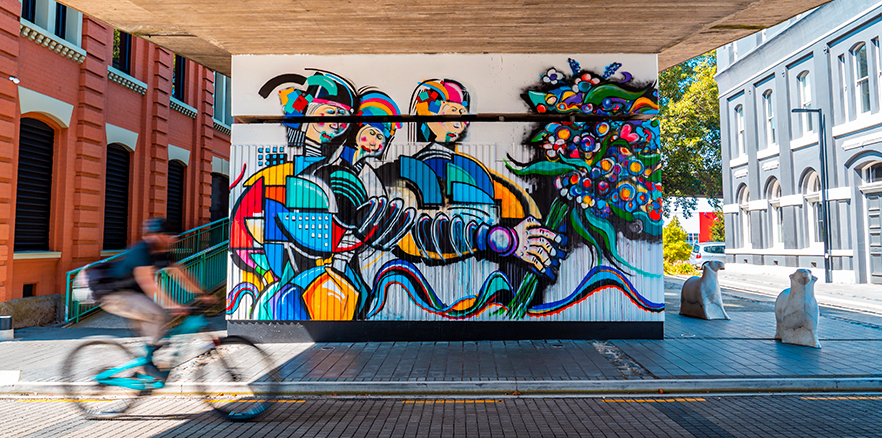
Dunedin is recognised as a UNESCO City of Literature – one of just 39 in the world. Some of New Zealand's most important writers and artists lived in Dunedin, including James K Baxter, Janet Frame, Frances Hodgkins, Ralph Hotere, and Colin McCahon.
Annual festivals include Puaka Matariki, Arts Festival Dunedin, Whānau Mārama New Zealand International Film Festival, World Cinema Showcase, and the iD Dunedin Fashion Week.
The Dunedin Fringe Festival is a significant event every second year.
Dunedin has multiple theatres, museums, music venues, cinemas, libraries, and art galleries to explore (including the Dunedin Public Art Gallery, which has the most extensive collection of Old Master paintings in New Zealand, and the most significant collection of paintings by post‑1800 overseas artists).
Forsyth Barr Stadium – New Zealand's largest indoor arena – has hosted concerts by Ed Sheeran, Kendrick Lamar, Macklemore, Pink, Six60, and Tinie Tempah – as well as All Blacks, Rugby World Cup, and Super Rugby matches.
Science and innovation

In 2019, the New Zealand Government recognised Dunedin as New Zealand's first Centre of Digital Excellence – backed by a NZ$10 million investment in local tech initiatives.
One of New Zealand's most successful startup incubators, The Distiller, is located on campus.
Audacious and Startup Dunedin support student and graduate startups, while shared workspaces Innov8hq and Petridish are located in the historic Warehouse Precinct – alongside tech companies like ADInstruments.
Other tech firms include Education Perfect, Fisher & Paykel (with 180 people in their industrial design team), Pocketsmith (personal finance), Scott Technologies (automation and robotics), and Timely (online scheduling).
Animation Research provides live 3D graphics for international sports including the America's Cup, European Golf Tour, Formula 1, NASCAR, the US Open, and World Rally Championship.
Rocketwerkz and Runaway both have game development studios in Dunedin.
NHNZ is a global documentary company based in Dunedin, with links to the University's Department of Science Communication – one of the largest science communication facilities in the world.
Every two years, we celebrate science and innovation at the New Zealand International Science Festival, which features global speakers and hands-on events throughout the city.
And we have gigabit fibre internet, city-wide.
Iconic architecture
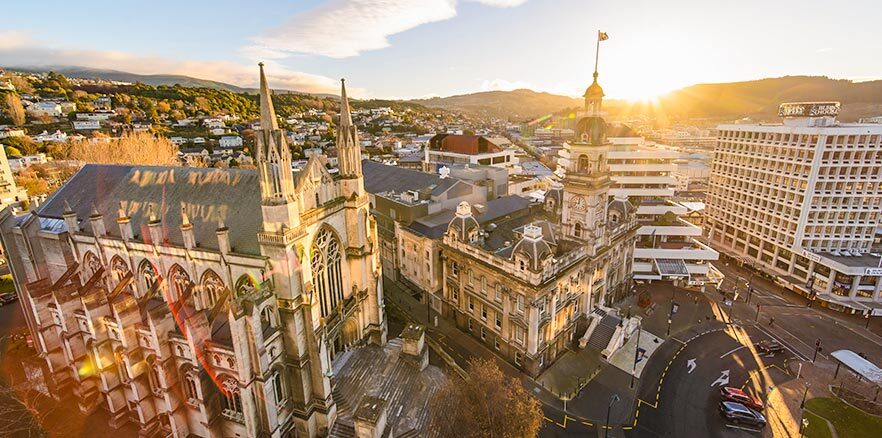
Because of Dunedin's early wealth, followed by slow growth in the 20th century, the city has preserved its substantial heritage buildings. The Dunedin Railway Station (1906) is the most photographed building in New Zealand. Other iconic buildings include Larnach Castle (the only castle in New Zealand; 1874), St Paul's Cathedral (1919), and the City Council's Municipal Chambers (1880).
The university also has historic buildings, however these have generally been repurposed to house administration staff. Most of the university's academic buildings are dramatically newer – including the brand-new School of Performing Arts and the Central Library, which Buzzfeed ranked 13th‑best library in the world.
The southern part of our campus – which includes the Faculty of Dentistry, School of Pharmacy, School of Physiotherapy, and Otago Medical School – is next to Dunedin Hospital, and one block away from Dunedin's main shopping precinct on George Street.
Overall, Dunedin's cityscape is a bit like Wellington's – but smaller, and with more beaches.
And the steepest street in the world: Baldwin Street, 2.5 km from campus.
A temperate climate (with snow)
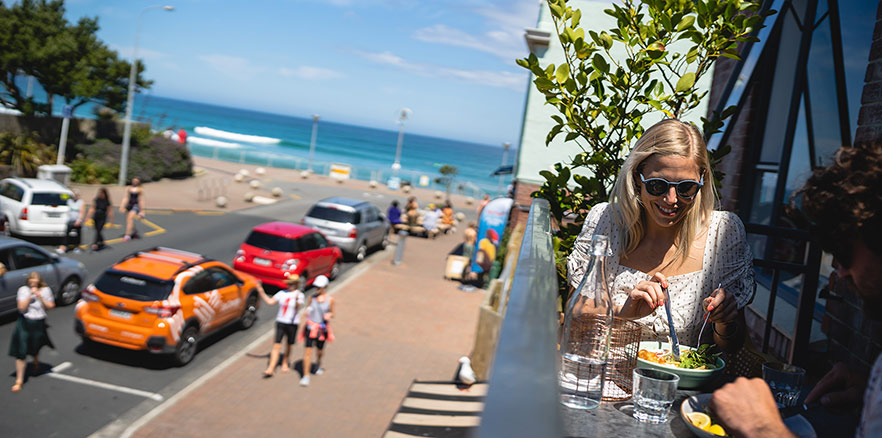
Dunedin winters are milder than in many world cities, including Beijing, New York, and Seoul. It briefly snows here most years, but it's only heavy enough to settle on the ground every two or three years. (Snow is more common in the highest hill suburbs, and less common in the city centre.)
Daily highs are typically 18–22 ºC in summer (with occasional highs around 30 ºC), and 10–12 ºC in winter.
Compared to Auckland, Dunedin has 40% less rain, lower humidity, and average temperatures around 4 ºC cooler.
Compared to Christchurch, Dunedin has 20% more rain, lower humidity, and average temperatures around 1 ºC cooler – but winter lows in Dunedin are typically 3 ºC warmer than in Christchurch.
Compared to Wellington, Dunedin has 40% less rain, lower humidity, and average temperatures around 2 ºC cooler. And way less wind.
International food, local drinks
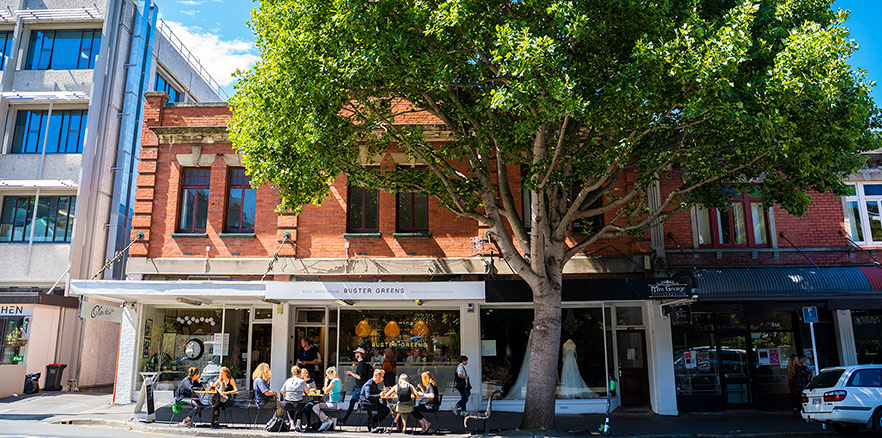
Close to campus, you'll find international street food, cafés, and restaurants with great-value menus, while most bars and clubs are centred around The Octagon – a 10‑minute walk away.
Dunedin's also known for Speight's Brewery and local craft beers. Emerson's is a 5‑minute walk from the eastern edge of campus. The Dunedin Craft Beer & Food Festival (organised by our students' association) is a sold‑out event at Forsyth Barr Stadium each October. OUSA also hosts the Dunedin International Food Festival each February.
Every Saturday, the Otago Farmers' Market is held outside Dunedin Railway Station. It's a great place for fruit and vegetables, artisanal baking, Bay Road peanut butter, Kapowai kombucha, and Fair Trade organic coffee.
Incidentally, the University of Otago was the first university in New Zealand to achieve Fair Trade status.
Transport yourself
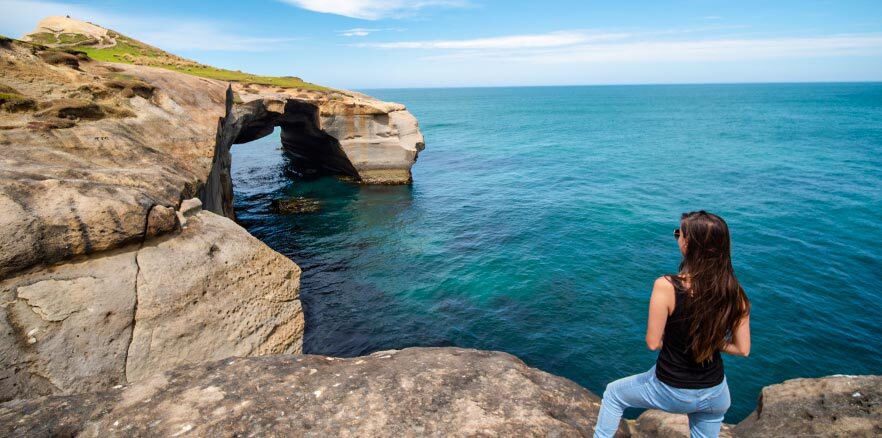
Air New Zealand has direct connections to Dunedin from Auckland, Christchurch, and Wellington. Jetstar flies directly from Auckland.
Dunedin Airport is a 30‑minute shuttle or taxi ride from campus. Discount shuttles are available via OUSA .
Bus routes connect Dunedin to Christchurch, Invercargill, Queenstown, and Wanaka – with further connections to all South Island destinations.
And you can drive to Dunedin – one of New Zealand's most vibrant cities – from anywhere in the South Island within a day.